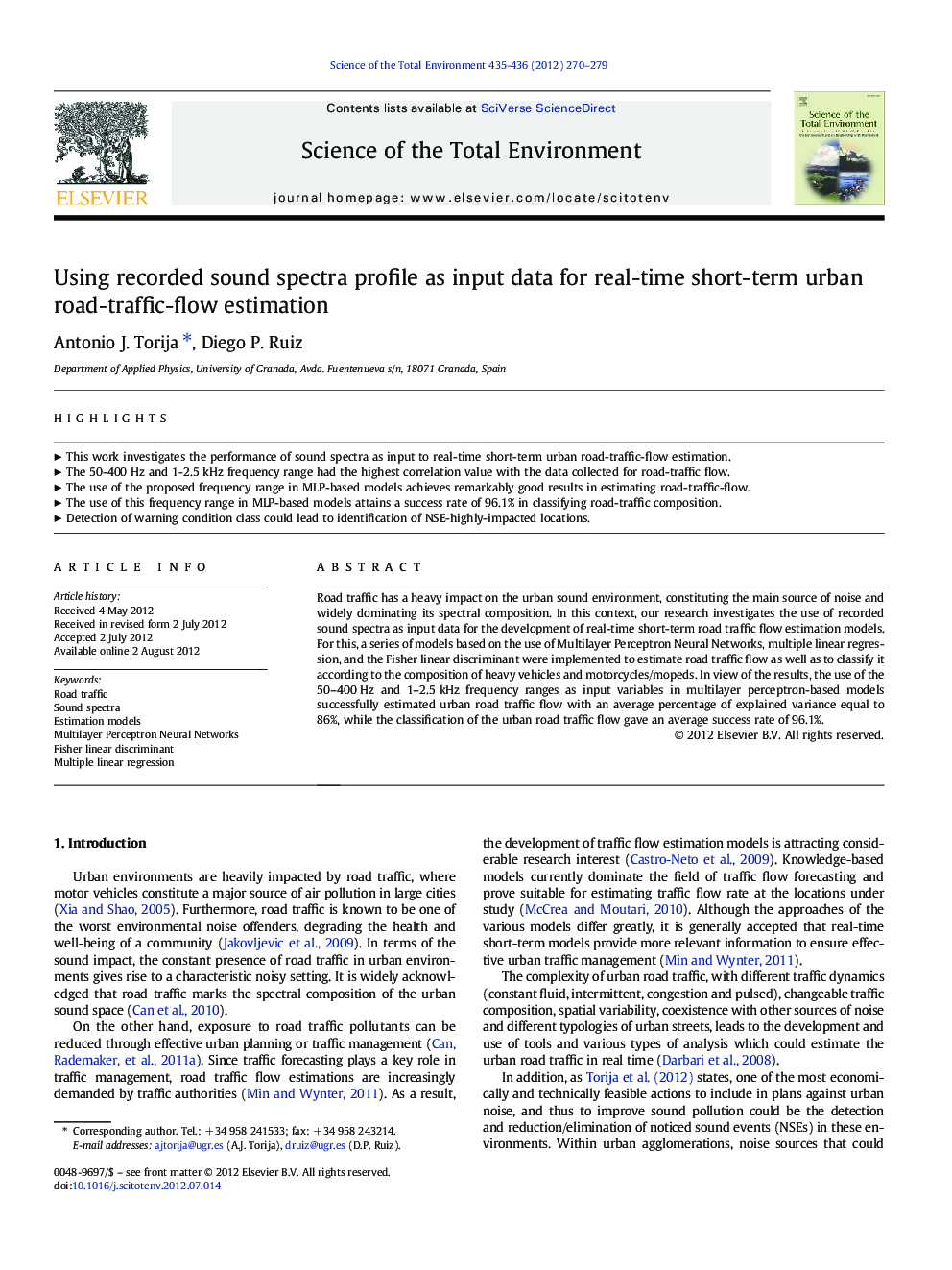| Article ID | Journal | Published Year | Pages | File Type |
|---|---|---|---|---|
| 4429266 | Science of The Total Environment | 2012 | 10 Pages |
Road traffic has a heavy impact on the urban sound environment, constituting the main source of noise and widely dominating its spectral composition. In this context, our research investigates the use of recorded sound spectra as input data for the development of real-time short-term road traffic flow estimation models. For this, a series of models based on the use of Multilayer Perceptron Neural Networks, multiple linear regression, and the Fisher linear discriminant were implemented to estimate road traffic flow as well as to classify it according to the composition of heavy vehicles and motorcycles/mopeds. In view of the results, the use of the 50–400 Hz and 1–2.5 kHz frequency ranges as input variables in multilayer perceptron-based models successfully estimated urban road traffic flow with an average percentage of explained variance equal to 86%, while the classification of the urban road traffic flow gave an average success rate of 96.1%.
► This work investigates the performance of sound spectra as input to real-time short-term urban road-traffic-flow estimation. ► The 50-400 Hz and 1-2.5 kHz frequency range had the highest correlation value with the data collected for road-traffic flow. ► The use of the proposed frequency range in MLP-based models achieves remarkably good results in estimating road-traffic-flow. ► The use of this frequency range in MLP-based models attains a success rate of 96.1% in classifying road-traffic composition. ► Detection of warning condition class could lead to identification of NSE-highly-impacted locations.
